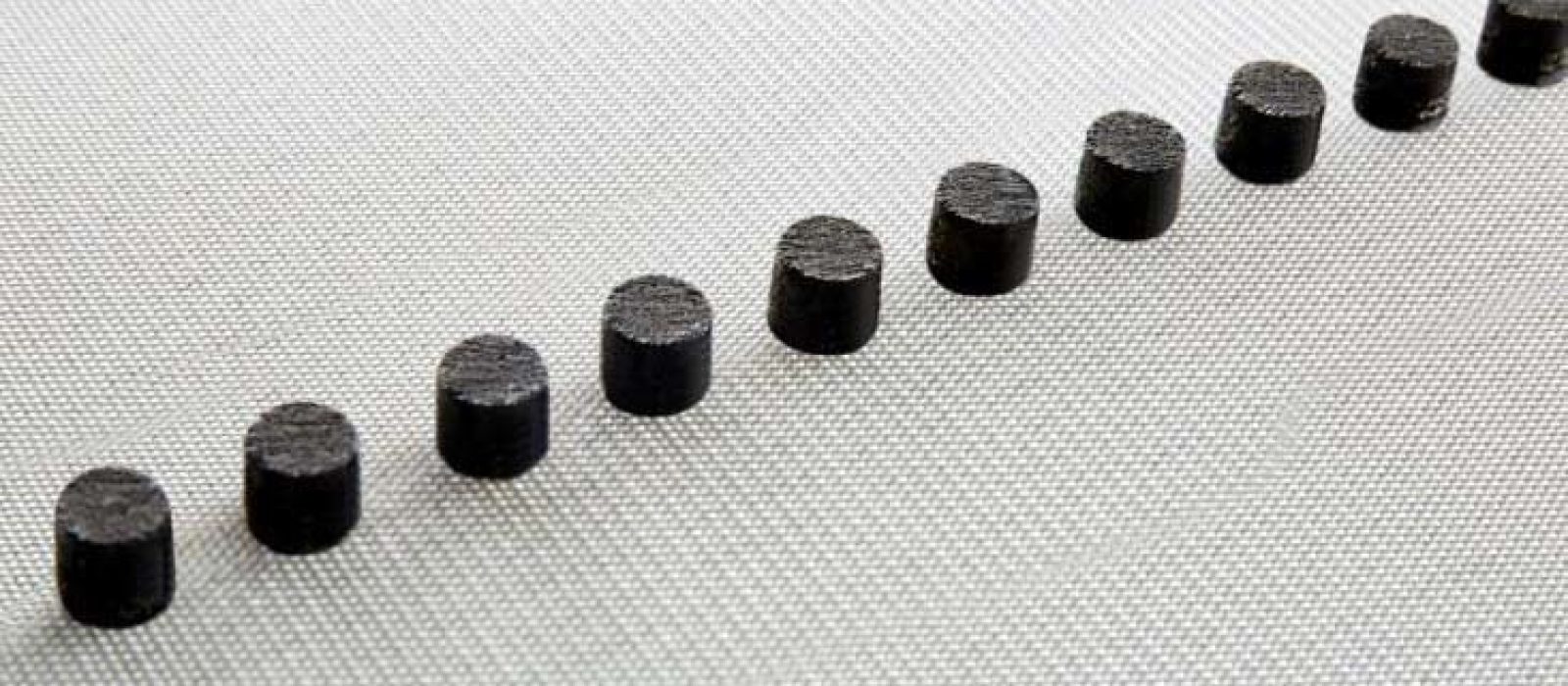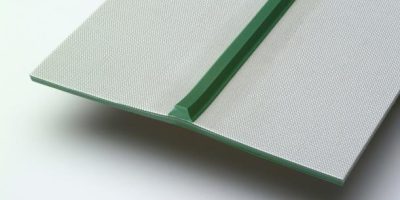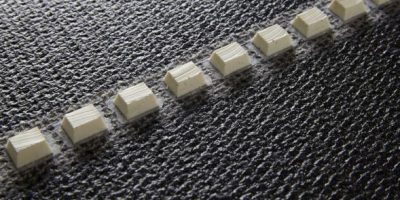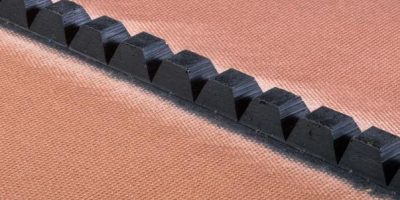
To assist with positive tracking, a guide strip(s) is often used on the pulley side of conveyor belts. V–guides are the most common shapes used. However, square and rectangular shapes are also available. In addition, Sparks has designed and developed round dot-guides for traveling over very small pulleys.
.Tracking assistance is often required on:
- Short, wide conveyors
- Conveyors with side-loading
- Reversing conveyors

Guide strips will not guarantee tracking success on a conveyor or conveyor belt that is poorly manufactured or lacking dimensional accuracy. The conveyor system and conveyor belt should be manufactured to reasonably track by normal means so that the use of guide strips can further ensure trackability.
The conveyor pulleys, bed and/or idler rollers should have an opening that is 1/4” wider and 1/16” deeper than the guide strip on the conveyor belt. Or conversely, the guide strip furnished on the conveyor belt should be 1/4” narrower and 1/16” shallower than the opening in the pulley, bed and/or idler rollers of the conveyor system. Guide strips are intended to improve tracking. They are not designed to drive the belt!

In general, a larger pulley is required when guide strips are used in conjunction with the belt. Smaller sized guide strips will operate over smaller pulleys better than larger guide strips. Guide strips made of softer durometer materials (i.e. PVC) will operate over smaller pulleys better than harder durometer materials (i.e. Polyurethane). Notched or segmented guide strips will navigate smaller pulleys better than solid guide strips.
Guide strips can be supplied down the center of the bottom of the conveyor belt or off-center to reduce wandering (side to side movement).

While it seems logical that two guides are better than one, it isn’t always true! Two guide strips require more precision in the conveyor design and in the placement of the guides on the belt. However, when two guide strips are required, the critical dimension is the center to center distance of the guide strips from each other. This is far more accurate (due to width tolerances in belting) than measuring from each edge of the belt to the center of each guide strip!